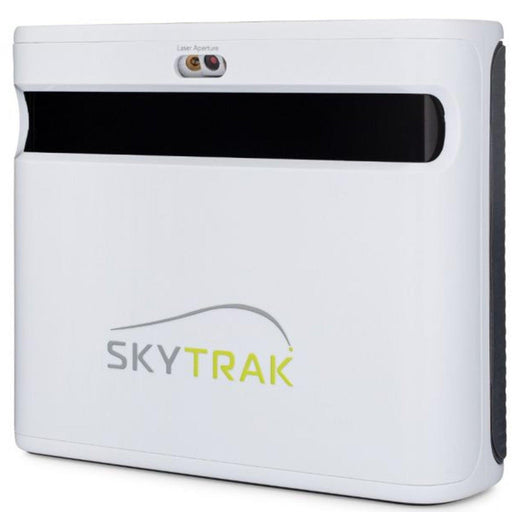Now through January 5th 15% OFF our very popular Vanish and Parlour Enclosures. Coupon code 15SWINGMASS

Tips for Setting Up Your Golf Simulator in Small Rooms
Limited space should never be a hindrance to enjoying the game of golf in the comfort of your own home. With advancements in technology and clever design strategies, setting up a golf simulator in a small room is not only feasible but can also be highly functional and enjoyable. In this guide, we'll explore some practical tips and creative solutions for maximizing space efficiency and creating an immersive golf experience, even in tight quarters.
1. Choose a Compact Simulator Setup:
When space is at a premium, opt for a compact simulator setup that offers a small footprint without compromising on performance. Consider the following:
- Retractable Screens: Invest in a retractable or foldable screen that can be easily rolled up or stored away when not in use, maximizing floor space.
- Portable Projectors: Select a compact and lightweight projector that can be mounted on the ceiling or wall to minimize clutter and optimize projection distance.
- All-in-One Systems: Look for all-in-one simulator solutions that integrate the necessary hardware, such as launch monitors and tracking sensors, into a single unit to reduce the need for additional equipment.
2. Utilize Portable Hitting Mats:
Portable hitting mats are versatile solutions for small spaces, allowing you to practice your swings indoors without the need for a dedicated hitting area. Here's how to make the most of them:
- Foldable Design: Choose a hitting mat with a foldable design that can be easily stored in a closet or under furniture when not in use, freeing up valuable floor space.
- Durability: Select a durable hitting mat with shock-absorbing properties to protect your floors and absorb the impact of your swings, ensuring long-term usability.
3. Optimize Space by Hitting Off-Center:
In small rooms, hitting off-center can help maximize space efficiency and prevent collisions with walls or furniture. Consider these tips:
- Angle the Setup: Position your simulator setup at an angle within the room to create more clearance space for your swings and minimize the risk of hitting obstructions.
- Create Buffer Zones: Leave ample space behind and to the sides of the hitting area to allow for follow-through and prevent accidental contact with surrounding walls or objects.
4. Embrace Multi-Purpose Furniture:
Make use of multi-purpose furniture and storage solutions to maximize the functionality of your small simulator room:
- Folding Tables: Use folding tables or desks that can be easily collapsed and stored away when not in use, providing additional workspace for setting up your simulator.
- Wall-Mounted Shelves: Install wall-mounted shelves or storage racks to keep equipment such as clubs, balls, and accessories organized and within easy reach without taking up valuable floor space.
- Convertible Seating: Choose seating options such as foldable chairs or benches that can be stowed away when not in use to free up space for swinging the club.
Making the Most of Limited Space:
Setting up a golf simulator in a small room requires careful planning and creative thinking to maximize space efficiency and create a functional and enjoyable gaming environment. By implementing these tips, you can transform even the most compact space into a dynamic and immersive golf simulator room that allows you to practice and play the game you love without limitations. With a little ingenuity and resourcefulness, your small simulator room can become your personal golf sanctuary where you can sharpen your skills and enjoy endless rounds of virtual golfing fun.

Have Questions About Golf Simulators?
Our expert team is here to help you find the perfect golf simulator for your needs.
Featured products
-
SkyTrak+
Original price $2,995.00 - Original price $3,145.00Original price$2,995.00 - $3,145.00$2,995.00 - $3,145.00Current price $2,995.00Introducing the SkyTrak+ Launch Monitor: Unmatched Accuracy and Advanced Features Experience a new level of precision and innovation with the SkyTr...
View full details -
ProTee Majestic Simulator Package
Original price $9,618.00 - Original price $13,848.00Original price$9,618.00 - $13,848.00$9,618.00 - $13,848.00Current price $9,618.00ProTee Majestic Golf Simulator Package: Elevate Your Indoor Golf Experience Transform your home or business into a golfer’s dream with the ProTee M...
View full details -
Eagle Golf Mat
Original price $370.00 - Original price $1,130.00Original price $370.00$370.00$370.00 - $1,130.00Current price $370.00Introducing the Eagle Golf Mat: The Ultimate Golf Experience Are you passionate about golf and demand nothing but the very best in your practice eq...
View full details -
Retractable HomeCourse® Golf ProScreen 180
Original price $2,299.00Original price $2,299.00 - Original price $2,299.00Original price $2,299.00Current price $1,999.00$1,999.00 - $1,999.00Current price $1,999.00HomeCourse® Golf ProScreen 180 HomeCourse® Golf ProScreen 180 is a retractable golf screen and enclosure. HomeCourse® Golf ProScreen 180's ballisti...
View full details -
The Augusta V2 4'x12' 2 Cups
Original price $399.00Original price $399.00 - Original price $399.00Original price $399.00Current price $329.00$329.00 - $329.00Current price $329.00The Augusta is one of Big Moss’ traditional models. It offers unmatched versatility for teaching and year round practice. Make a long-term investme...
View full details





